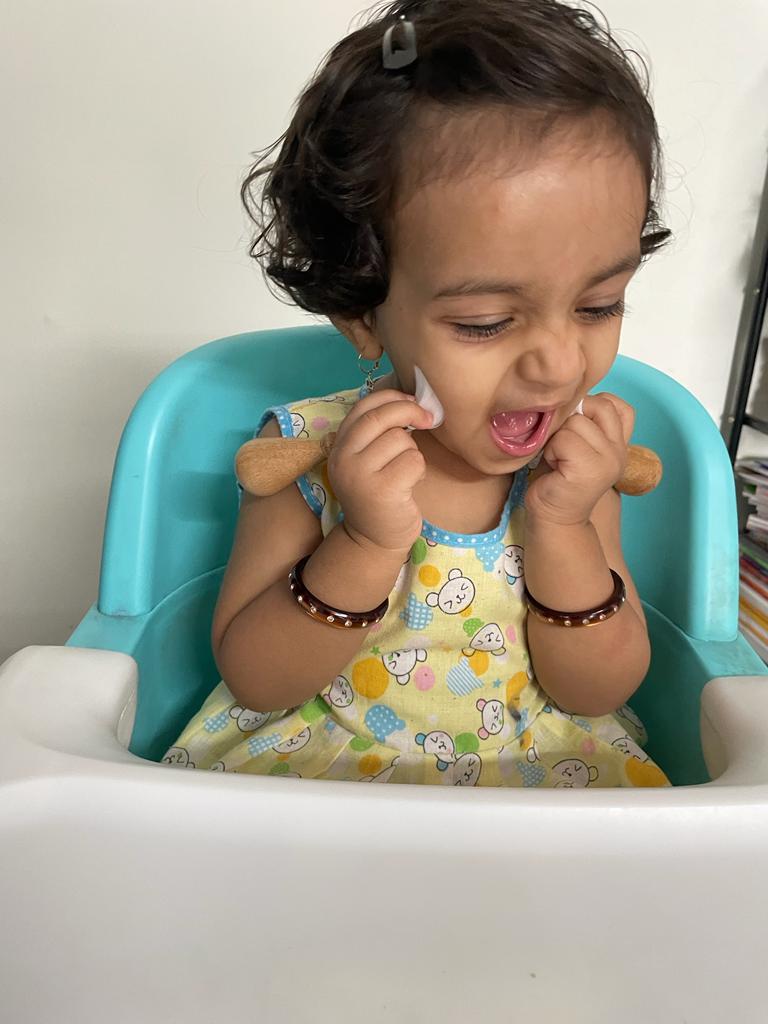Mouthing, the act of putting objects, toys, or even body parts into the mouth, is a common behavior among infants and young children. While it may raise concerns for some parents, it is generally a normal and developmentally appropriate behavior. In this blog, we will address frequently asked questions about mouthing, its developmental significance, and alternative sensory needs. Additionally, we'll introduce you to Dabble Playart's toxin-free products, providing a worry-free solution for parents with toddlers.
FAQs About Mouthing:
Is mouthing normal in children?
- Yes, mouthing is a common and normal behavior in infants and young children. It is a way for them to explore and understand the world around them, as they use their mouth to gather sensory information.
Mouthing encompasses more than just the act of putting objects or fingers into the mouth; it is an essential sensory experience for children. Babies and young children use their mouths as a tool for learning about the world around them.
Here's why mouthing is not only normal but also crucial in their development:
- Sensory Exploration: Infants have limited ways to explore their surroundings. Mouthing allows them to gather valuable sensory information about objects, textures, and tastes. By putting objects into their mouths, they can understand the world through the sense of touch, taste, and temperature.
- Teething Relief: Mouthing provides relief during the teething process. As a child's teeth start to emerge, they may experience discomfort and soreness in their gums. Chewing on safe, teething-friendly items can help alleviate this discomfort.
- Cognitive Development: Mouthing plays a significant role in cognitive development. It helps children develop object permanence, which is the understanding that objects continue to exist even when they are out of sight. This foundational concept lays the groundwork for more complex cognitive skills later in life.
- Motor Skill Development: The act of grasping and manipulating objects to bring them to their mouths supports the development of fine and gross motor skills. This coordination is vital for activities like self-feeding, drawing, and writing as the child grows.
Is mouthing developmentally okay?
- Yes, mouthing is a vital part of a child's sensory development. It helps them learn about the taste, texture, and temperature of objects touch etc., which is crucial for their cognitive and motor development.
- When should I be concerned about mouthing?
- Mouthing becomes a concern if it persists beyond the toddler years (around 2-3 years old) or if the child is frequently putting non-food items into their mouth, which can pose choking hazards. If you are using toxic art supplies for your toddler - please stop now and be brand conscious when it comes to products for your baby!
- What can I do to manage excessive mouthing?
- Ensure your child has a variety of safe, age-appropriate toys to explore.
- Keep small objects and potential choking hazards out of reach.
- Teach them about the difference between edible and non-edible items.
- Encourage sensory exploration through other activities like touching, smelling, and listening.
- Visit your paediatrician if this continues for a longer time
Alternative Sensory Needs:
Children engage in mouthing for sensory stimulation. Here are some alternative sensory activities to address these needs:
- Tactile Sensory Play: Provide materials like homemade playdough or water play for tactile exploration.
For water play , you can add a tad bit of safe edible colour into the water for a visual experience

How can I make play dough at home ? Click HERE -
- Sensory Bins: Create sensory bins with rice, beans, or colored pasta for a tactile and visual experience.You can fill in your sensory bin starting with some taste safe fillers like roasted aata with cocoa powder instead of sand, Cooked Rice, Flowers and Petals Lemon slices or any other fruit slices mixed with water to explore the taste and different texture.
(Please always have a watch on them with this activity)

Image by Surbhi (Dabble mom)
Suggestion by Deepika (Dabble mom)
- Chew Toys: For teething toddlers, offer safe and age-appropriate chew toys.
You would be delighted to know that Dabble Playart’s Jumbo paint brush handles are bulb like and is advised for kids starting 1 year. The Bulb-shaped wooden handle is made of mango wood and is safe for your lil one’s to chew on.

- Texture Boards: Construct boards with various textures like fabric, shells, cardboard piece or feathers for tactile exploration.

- Musical Play: Introduce musical instruments or toys that produce sounds, catering to auditory needs. You have also have soft music being played int the background from time to time

Dabble Playart's Solution:
We at Dabble Playart understand the concerns parents have about the safety of products that children may put in their mouths. While our products are not intended to be edible, they are made from natural ingredients and have been dermatologically tested and certified. This means you can be worry-free if your little one puts our paints or crayons in their mouth.
How to Be Worry-Free with Dabble Playart?
- Wash your child's mouth with lukewarm water if they accidentally ingest a small amount of our baby safe paints or toxin-free crayons
- Our products are formulated with safety in mind, and any accidental ingestion of small amounts is unlikely to cause harm.
- Rest assured that our toxin-free products prioritize your child's well-being.
In conclusion, mouthing is a normal and developmentally appropriate behavior in children. It serves as a way for them to explore and learn about their surroundings. By offering alternative sensory activities and using safe, toxin-free products like Dabble Playart, parents can confidently support their child's development while minimizing worries about mouthing. Remember, while mouthing is typical, safety remains a top priority for parents and caregivers.













